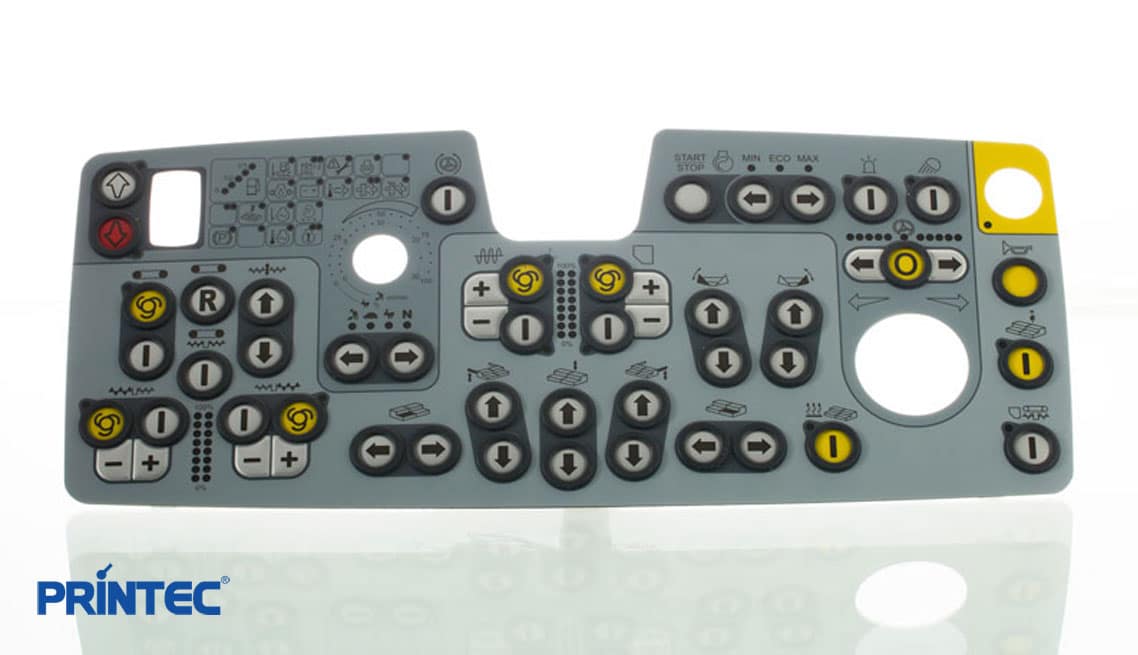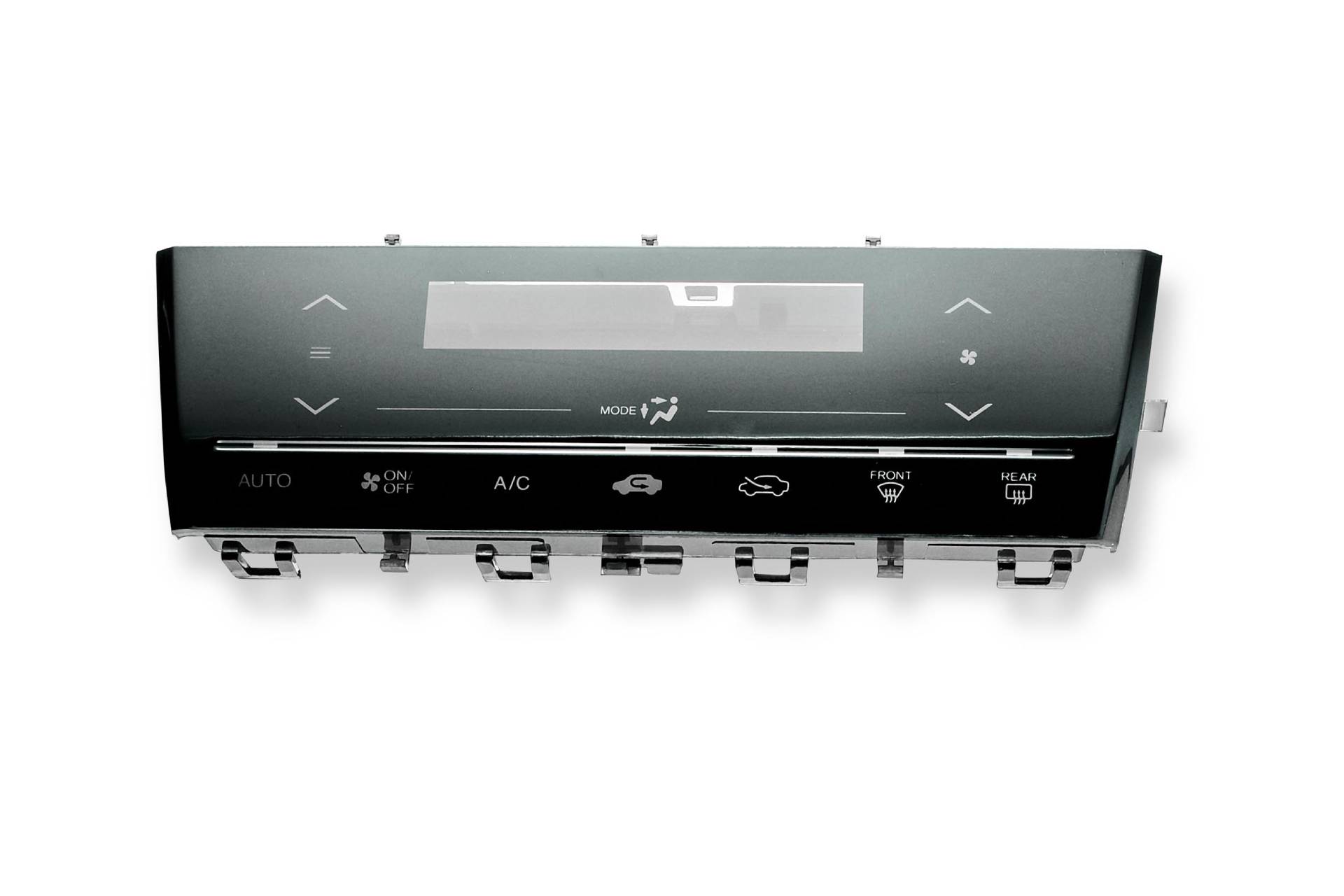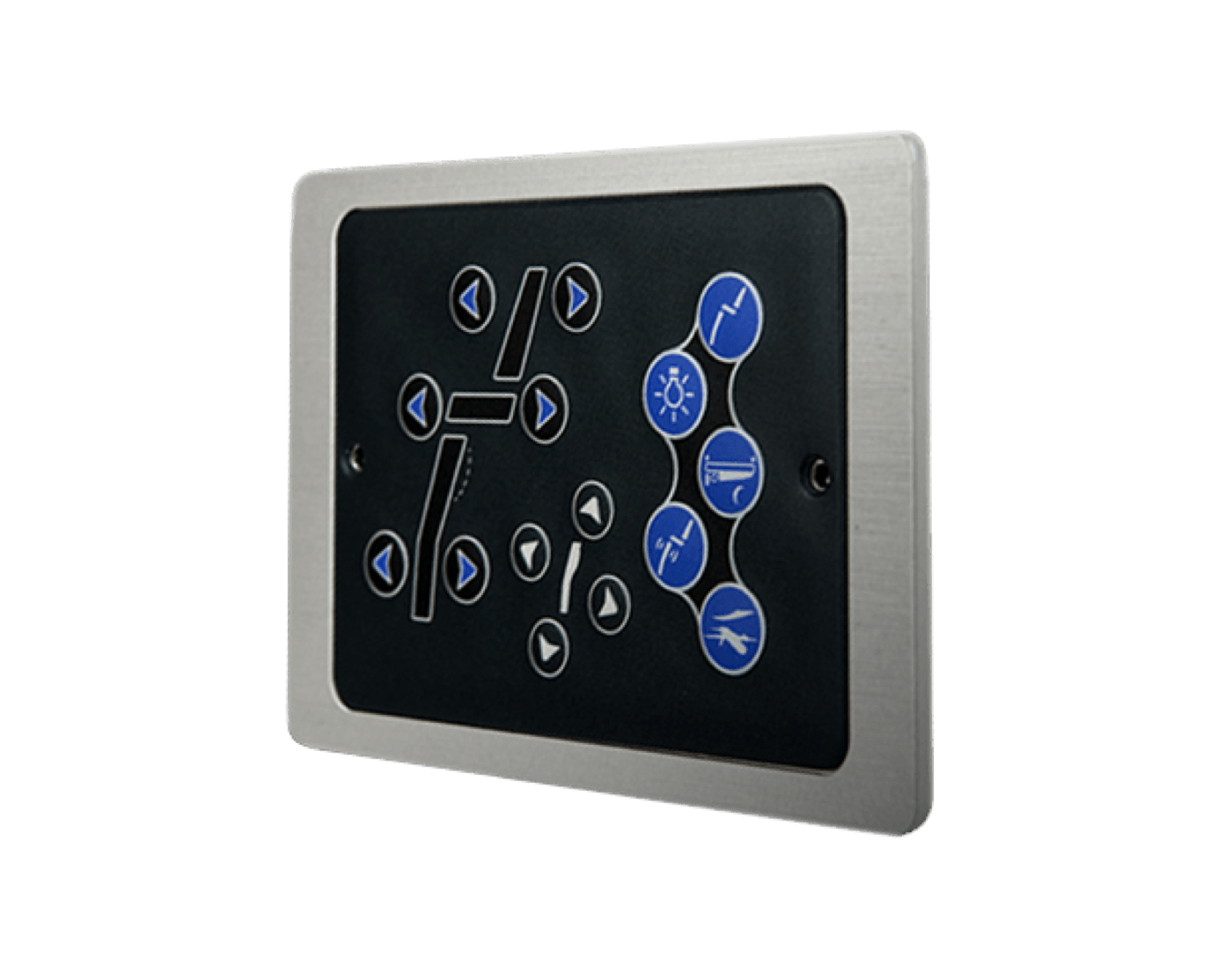Understanding the Value of Membrane Switch in Modern Electronics and Their Applications
Membrane switches over work as a vital part in modern electronics, supplying an effective user interface for user interaction. Their light-weight and adjustable nature makes them ideal for a variety of applications throughout diverse industries. Understanding their essential elements and benefits can provide insights into their expanding importance. As innovation proceeds to advance, the advancement of Membrane changes elevates concerns about their future applications and design developments. What exists ahead in this vibrant area?

What Are Membrane Buttons?
Membrane buttons are vital elements in modern electronics, working as individual interfaces that facilitate interaction in between customers and tools. These buttons consist of numerous layers, including a visuals overlay, an adhesive layer, and a circuit layer, every one of which work with each other to produce a useful and durable interface. The style permits a flat, inconspicuous service that can be personalized regarding size, shape, and visual look, making them ideal for various applications, from consumer electronics to clinical devices. The tactile comments supplied by Membrane changes boosts user experience, while their resistance to dirt and moisture makes them perfect for testing environments. Additionally, Membrane buttons can integrate functions such as backlighting and printed graphics, even more increasing their use. Their versatility and effectiveness make them a favored option in markets where integrity and convenience of usage are paramount, inevitably adding to the seamless operation of modern digital devices.
Trick Parts of Membrane Switches
While numerous elements add to the capability of a membrane button, three primary layers play substantial duties in its design and procedure. The leading layer, commonly made from a sturdy polymer, serves as the interface for individual interaction, typically including printed icons and graphics. Under this is the spacer layer, which keeps the necessary distance in between the leading layer and the circuit layer. This spacer layer assurances that the switch activates just when pressed, stopping accidental inputs. The circuit layer contains conductive traces that complete the electric circuit when the top layer is dispirited. These traces can be made from numerous products, including copper or silver. With each other, these elements produce a durable and reputable tool that is compact and versatile, suitable for a wide variety of electronic applications, from family home appliances to clinical tools. Understanding these vital elements is vital for appreciating the general functionality of Membrane buttons.
Advantages of Making Use Of Membrane Changes

Membrane Switch Production Refine
Recognizing the Membrane button manufacturing process exposes the complex steps associated with generating these necessary components. The process usually begins with the design phase, where designs and specifications are developed using specialized software program. Following this, the visuals overlay is published on a flexible substrate, often utilizing high-resolution printing techniques to assure clearness and precision.Next, the adhesive layers are used, which offer to bond the numerous parts together. The circuit layers, made from conductive inks or products, are after that printed onto a different substrate. These layers are very carefully aligned and laminated flooring to develop a practical switch.After setting up, the switches undergo examining to confirm performance and durability. Quality assurance procedures are carried out throughout the process to identify and correct any problems. The finished Membrane buttons are packaged and prepared for circulation, all set to fulfill the demands of modern-day digital applications.
Applications of Membrane Switches Over in Different Industries
Membrane buttons are progressively used throughout numerous industries, particularly in medical equipment and consumer electronics. In the medical area, they give trusted control interfaces for gadgets that call for accurate operation. In a similar way, in consumer electronic devices, these switches improve customer communication by supplying streamlined and responsive user interfaces.
Medical Devices Control
Various contemporary clinical devices make use of Membrane buttons for streamlined operation and improved individual communication. These buttons give a trustworthy, resilient user interface for a selection of applications, including diagnostic devices, person monitoring systems, and surgical tools. Their customizable layouts enable specific formats that can fit the special needs of healthcare professionals, making certain intuitive navigating and effective accessibility to vital features. In addition, Membrane buttons are resistant to pollutants, making them suitable for sterile atmospheres. The tactile responses they supply can improve customer confidence, minimizing the risk of mistakes throughout important medical procedures. In general, the combination of Membrane switches in medical equipment significantly adds to enhanced operational efficiency and patient safety in medical care setups.
Customer Electronic Devices Interfaces
In the domain of customer electronic devices, Membrane buttons play an essential role in enhancing user interfaces throughout a large range of devices. These switches are essential to items such as push-button controls, microwaves, and video gaming consoles, providing a easy to use and reliable user interface. Their layout enables for a seamless integration of graphics and capability, making it possible for suppliers to develop sleek, modern aesthetics without jeopardizing usability. Membrane switches are likewise known for their durability, commonly standing up to browse around this web-site extensive use and exposure to numerous ecological conditions. Additionally, they can integrate attributes like backlighting and responsive responses, further improving the user experience. As consumer demands for innovative yet user-friendly interfaces grow, Membrane changes remain to be a vital element beforehand electronic gadget performance.
Design Factors To Consider for Membrane Changes
Creating effective Membrane changes requires mindful interest to different factors that affect both functionality and customer experience. One vital consideration is the choice of materials, as they can influence sturdiness, responsive feedback, and aesthetic charm. Choosing an appropriate adhesive is essential for ensuring long-lasting attachment and resistance to environmental factors.In enhancement, the format and style of the button have to accommodate customer communication, with button sizes and visit here spacing maximized for convenience of use. The consolidation of graphics and labeling should focus on clearness and visibility under different illumination conditions.Consideration of electrical features, such as actuation force and button level of sensitivity, will improve the responsiveness of the Membrane button. Additionally, the layout should accommodate manufacturing processes to guarantee cost-effectiveness and timely production. Generally, a well-balanced style enhances both the performance and the individual experience of Membrane buttons in modern-day electronics.

Future Fads in Membrane Switch Technology
As modern technology proceeds to progress, Membrane switches are poised to integrate brand-new improvements that will certainly enhance their functionality and application in various fields. One considerable pattern is the consolidation of versatile and long lasting products, which will certainly increase the lifespan and integrity of these buttons. Enhanced surface textures and customizable graphics are likewise expected, enabling more intuitive user interfaces.Moreover, the integration of wise modern technology, such as touch-sensitive surfaces and haptic comments, is anticipated to improve customer interaction, making Membrane switches over more receptive and appealing. Additionally, breakthroughs in published electronics will allow more complex wiring within thinner profiles, additionally expanding design possibilities.Sustainability will additionally play a crucial role in future developments, as makers check out eco-friendly materials and production procedures. In general, these trends will certainly assure that Membrane changes continue to be relevant and important in a progressively digital and interconnected globe.
Regularly Asked Questions
Exactly How Do Membrane Changes Compare to Conventional Mechanical Buttons?
Membrane changes deal advantages over traditional mechanical switches, including lowered size, lighter weight, and enhanced durability. They generally provide a secured surface, improving resistance to dirt and moisture, making them perfect for varied applications.
What Materials Are Typically Utilized in Membrane Switch Building?

Can Membrane Switches Over Withstand Extreme Environmental Conditions?
Membrane switches can endure extreme environmental conditions, depending on their design and products. Top notch constructions usually feature sturdiness against temperature level variations, moisture, and direct exposure to chemicals, making them appropriate for various requiring applications across sectors.
For How Long Do Membrane Changes Generally Last Prior To Failing?
Membrane switches commonly show a life-span varying from 1 to 10 million actuations, depending on factors such as usage frequency, have a peek at this website ecological conditions, and making top quality. Routine upkeep can extend their longevity and functional dependability significantly.
Are Membrane Switches Over Customizable for Details Applications?
Membrane buttons are undoubtedly customizable for specific applications. They can be tailored in size, style, and capability, allowing makers to meet unique customer demands and boost item appearances while keeping functional performance and toughness. Membrane switches are crucial parts in modern-day electronics, offering as individual interfaces that promote communication in between users and devices. The responsive comments supplied by Membrane switches enhances user experience, while their resistance to dust and moisture makes them suitable for testing atmospheres. The consolidation of graphics and labeling should focus on clearness and visibility under numerous lights conditions.Consideration of electric attributes, such as actuation pressure and switch sensitivity, will certainly improve the responsiveness of the Membrane button. Enhanced surface structures and customizable graphics are additionally anticipated, allowing for even more intuitive individual interfaces.Moreover, the assimilation of smart modern technology, such as touch-sensitive surfaces and haptic feedback, is expected to enhance customer communication, making Membrane changes much more engaging and responsive. Membrane switches over offer benefits over traditional mechanical buttons, consisting of decreased size, lighter weight, and improved sturdiness.
 Alfonso Ribeiro Then & Now!
Alfonso Ribeiro Then & Now! Jenna Jameson Then & Now!
Jenna Jameson Then & Now! Mackenzie Rosman Then & Now!
Mackenzie Rosman Then & Now! Monica Lewinsky Then & Now!
Monica Lewinsky Then & Now! Lucy Lawless Then & Now!
Lucy Lawless Then & Now!